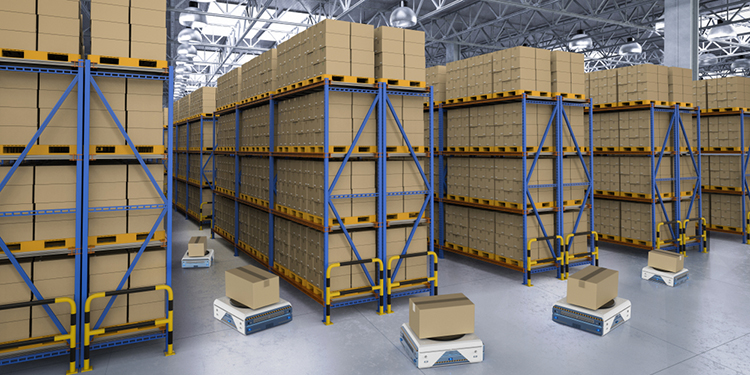How To Calculate The Return On Investment Of An Automatic Guided Vehicle Installation

Thinking of investing in an automatic guided vehicle (AGV) system? Then you’re probably also thinking about how to cost-justify its implementation. Although no two AGV systems are the same, there is a basic calculation to help determine roughly how long will it take for those computer-controlled, wheel-based load carriers to pay for themselves. Here, we’ll walk through the formula and a couple of different return on investment (ROI) calculations that consider different factors to help you run the numbers.
An AGV installation yields a variety of hard and soft benefits that contribute to the ultimate ROI of a project. (In fact, MHI’s AGVS Industry Group recently explored this topic in a webinar, available here.) These include both direct and indirect costs. Direct costs are factors such as hourly wages, overtime, equipment, maintenance, inventory traceability and more. Indirect costs are intangibles that can be challenging to assign a value, such as increased safety, reallocation of labor, reduced workers compensation claims, improved efficiency and more.
While different companies use different costs for determining AGV ROI, the simplest calculation multiplies the annual wages per forklift operator by the number of positions, then divides the cost of the AGV system by that number. In a formula that looks like:
AGV System Cost / Wages x Positions
With some example numbers, here’s how that calculation would look:
An operation with 15 total forklift operators, each paid $60,000/year = $900,000 Yearly
$1,750,000 AGV System / $900,000 Annual Wages = 1.94, or a 2-Year Payback
For a slightly more accurate, two-step calculation, first add the annual burdened wages cost of an employee (including benefits) to the average annual overtime costs per person. Then multiply that answer by the total number of forklift operators to determine the total position costs. Next, add total yearly position costs to the cost of buying new manual forklifts. This answer is the cost of 1 year of status quo materials movement. In the second step of this calculation, divide the cost of the AGV system by the cost of 1 year of status quo materials movement. This yields an approximation of the number of years it will take the AGV system to break-even.
Step 1: ((Burdened Wages + Overtime) x Positions) + (Forklift cost) = Year 1 Cost
Step 2: AGV System Cost / Year 1 Cost = Years to Break Even
With some example numbers, here’s how that calculation would look:
Step 1a: An operation with 15 total forklift operators, each paid $75,000/year including benefits plus $15,000/operator/year in overtime = $1,350,000 Yearly Operator Costs
Step 1b: $21,000 annual forklift costs (maintenance, batteries, payments) x 7 forklifts = $147,000 Yearly Forklift Costs
Step 1c: $1,350,000 Yearly Operator Costs + $147,000 Yearly Forklift Costs = $1,497,000
Step 2: $1,750,000 AGV System / $1,497,000 Annual Wages = 1.16, or a 13-Month Payback
Again, just as each application is different, so is each operation’s unique calculation of AGV ROI. For help in determining how AGVs can positively impact the bottom line in your facility, the members of MHI’s AGVS Industry Group are available to help both with outlining the hard and soft benefits of such an investment, as well as with the calculations to justify the upfront costs. For more information, visit mhi.org/agvs.



